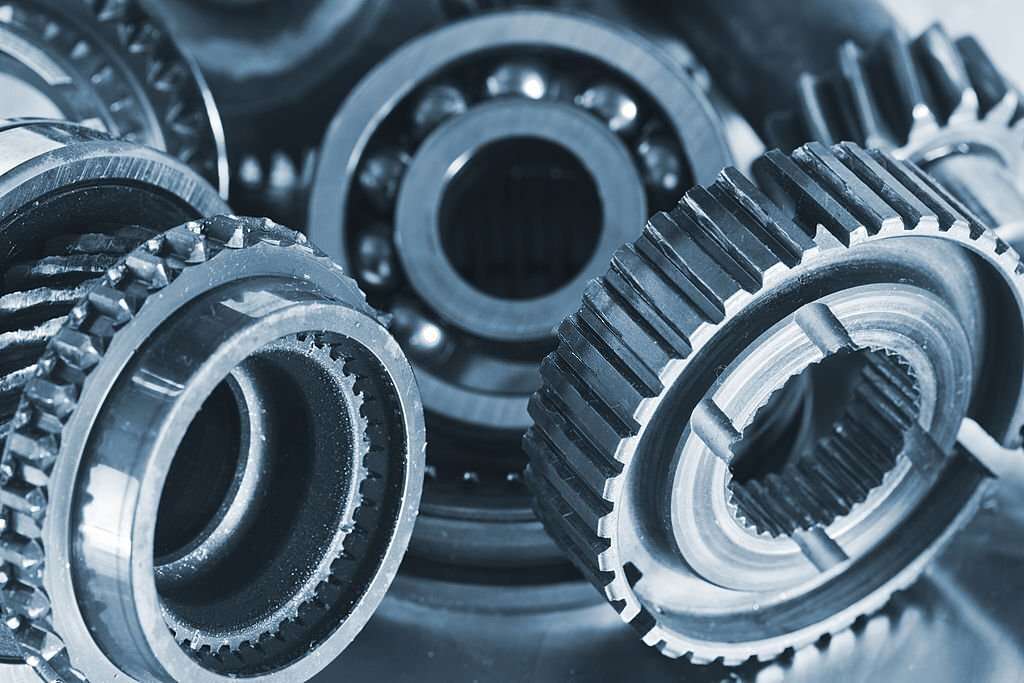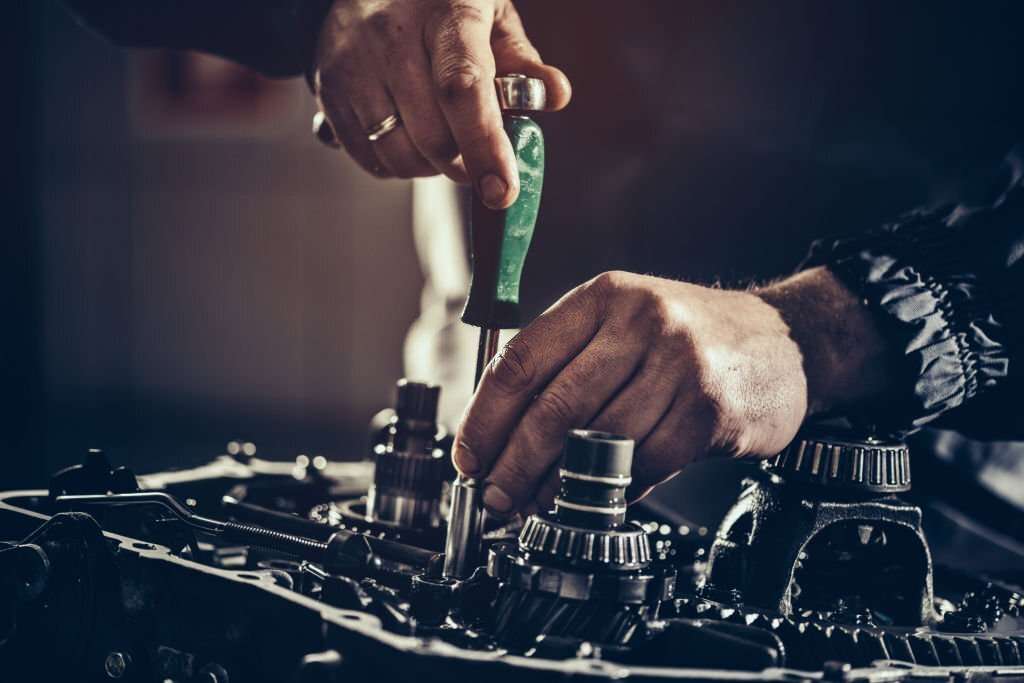If you drive a Chevy truck, then at some point you’re going to need to know how to replace the pinion bearing. Replacing a pinion bearing on a Chevy truck can seem like a daunting task, but it’s not that difficult.
In this article, we will walk you through the step-by-step process of how to replace pinion bearing on Chevy truck.
We’ll also give you some tips on how to prevent this from happening again in the future. So, whether you are a DIY novice or an experienced mechanic, this guide is for you.
Jump to
How to identify a problem with the pinion bearing?
The first step is to identify the problem. There are a few symptoms that will indicate that your pinion bearing needs to be replaced.
1. Noise:
One of the most common symptoms is a grinding noise coming from the rear of the vehicle. This noise will usually get louder when you turn the steering wheel.
2. Vibration:
Another common symptom is a vibration coming from the rear of the vehicle. This can be felt through the seat, the steering wheel, or even the pedals.
3. Leaking:
Leaks will usually be accompanied by a burning smell coming from the rear of the vehicle.
4. Wear and tear:
In case you notice that your vehicle is not performing as well as it used to, or that the fuel economy has decreased, then this could be a sign that the pinion bearing needs to be replaced.
5. Mileage:
If you have driven your vehicle for a long time without replacing the pinion bearing, then it is likely that it needs to be replaced.
How do prevent these problems with pinion bearing?
These are just a few of the things you can do to prevent problems with the pinion bearing on your Chevy truck.
Check the fluid level:
The first thing you need to do is check the fluid level. If the fluid level is low, then it’s likely that the pinion bearing is the culprit. To check the fluid level, simply remove the dipstick and check the level on the stick. If it’s low, then you’ll need to add more fluid.
Check for leaks:
Another thing you can do to prevent problems with the pinion bearing is to check for leaks. If you see any fluid leaking from the bearing, then it’s likely that the seal is damaged and needs to be replaced.
Inspect the bearing:
Another preventative measure you can take is to inspect the bearing itself. If you see any damage to the bearing, then it’s likely that it needs to be replaced.
Replace the fluid:
Another preventative measure you can take is to replace the fluid. Over time, the fluid in the differential can break down and cause problems with the pinion bearing. To replace the fluid, simply drain the old fluid out and add new fluid.
Check the level of maintenance:
Finally, you’ll need to check the level of wear on the pinion bearing. If the bearing is excessively worn, then it’s likely that it needs to be replaced. To check the level of wear, simply remove the bearing and inspect it for any damage. If you see any damage, then it’s likely that the bearing needs to be replaced.
What are the steps involved in how to replace pinion bearing on Chevy truck?
Replacing the pinion bearing on your Chevy truck is a relatively easy task that anyone can do. By following the steps above, you can save yourself a lot of money by doing it yourself.
1. Jack up the truck: First of all you’ll need to jack up the truck in order to access the pinion bearing.
2. Remove the wheels: Once the truck is jacked up, remove the wheels.
3. Disconnect the driveshaft: After removing the wheels you’ll need to disconnect the driveshaft. To do this, locate the pinion yoke and disconnect it from the differential.
4. Remove the old pinion bearing: Remove the old pinion bearing. This can be done by simply unbolting the old bearing from the truck. You will need a ratchet and socket to do this. Once the nut is removed, the bearing can be pulled out by hand.
5. Clean the area around the pinion bearing: When the old bearing is removed, you will need to clean the area around the pinion bearing. This is important because you don’t want any dirt or debris getting into the new bearing.
6. Install the new pinion bearing: Now it’s time to install the new pinion bearing. This is done by simply bolting the new bearing into place. You will need a ratchet and socket to do this.
7. Torque the pinion bearing to specifications: Once the new bearing is in place, you will need to torque the pinion bearing to specifications. This is important because you don’t want the bearing to come loose.
8. Reconnect the driveshaft: Once the new pinion bearing is installed, you can reconnect the driveshaft. This can be done by sliding it back into place and bolting it down. Once everything is back in place, you can lower the truck.
9. Test drives the truck: To make sure everything is working properly, take the truck for a test drive. If you notice any strange noises or vibrations, make sure to have the truck checked out by a professional.

What are the safety concerns you should consider while replacing pinion earing on a chevy truck?
When working on any vehicle, it is important to take safety precautions. This is especially true when working on the suspension of a vehicle. The following are some safety tips to keep in mind when replacing the pinion bearing on your Chevy truck:
1. Wear glasses:
Always wear safety glasses when working on any vehicle. It will protect your eyes from any flying debris.
2. Wear gloves:
It is important to wear gloves when working on any vehicle. This will protect your hands from any sharp edges.
3. Use jack stands:
When working on the suspension of a vehicle, it is important to use jack stands. This will prevent the vehicle from falling on you if the jack should fail.
4. Block the wheels:
Once the vehicle is raised, be sure to block the wheels. This will prevent the vehicle from rolling while you are working on it.
5. Read the manual:
Always read the owner’s manual before working on any vehicle. This will give you important information about the vehicle that you are working on.
6. Be careful:
When working on any vehicle, it is important to be careful. This is especially true when working on the suspension of a vehicle. If you are not careful, you could seriously injure yourself. With these safety tips in mind, let’s get started on replacing the pinion bearing on your Chevy truck.
Final Verdict:
Replacing the pinion bearing on your Chevy truck is a pretty straightforward process. The process is similar to replacing the bearings on any other vehicle. Just be sure to take your time and follow all of the steps carefully. However, there are some safety concerns that you should keep in mind. Always wear safety glasses and gloves when working on any vehicle.
In addition, be sure to use jack stands and block the wheels when working on the suspension of a vehicle. Following these safety tips will help to ensure that you don’t get hurt while replacing the pinion bearing on your Chevy truck.
In this article, we have given you a step-by-step guide on how to replace the pinion bearing on your Chevy truck.
We have also included some safety tips to keep in mind. Just be sure to take your time and follow all of the steps carefully.
FAQ’s – Frequently Asked Questions
1. How much does it cost to replace a pinion bearing?
If you’re looking to replace a pinion bearing, it’s likely going to set you back between $242 and nearly three hundred dollars. Labor costs can range from just over one-hundred and eighty bucks up close to two-fifty while parts are generally priced somewhere around sixty dollars.
But remember: those estimates don’t take into account taxes or the fact that your vehicle might require some special attention not reflected in universal pricing.
2. What does a worn pinion bearing sound like?
When slowing down, a pesky whine might hint at an issue with the pinion bearing. A howl during acceleration could also be indicative of this problem. If you’re hearing worrisome rumbles or whines while your vehicle is travelling above 20 mph, it’s possible that the carrier bearing has become worn out – listen for any changes when cornering as well.
3. What causes a pinion bearing to fail?
Pinion-bearing failure is a common occurrence and can be attributed to two causes – inadequate lubrication and corrosion.
By taking preventive measures such as regular inspections, proper lubricant selection and maintenance you may save your bearings from premature wear or damage 80% of the time. Corrosion can be prevented by keeping the underside of your vehicle clean – especially road salt.

My name is Tom Harris, founder of this blog. I’m a mechanical engineer with 20 years of experience in the automotive industry. I’m here to help you with your vehicle’s problems, easy fixes and share my insights and experience so that you can enjoy your rides more.

